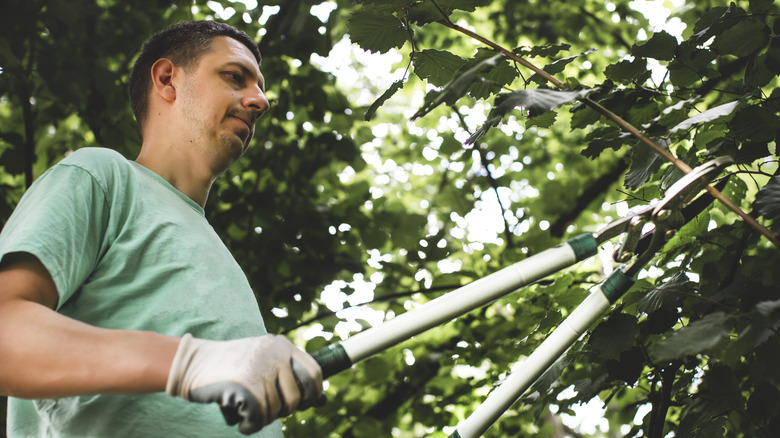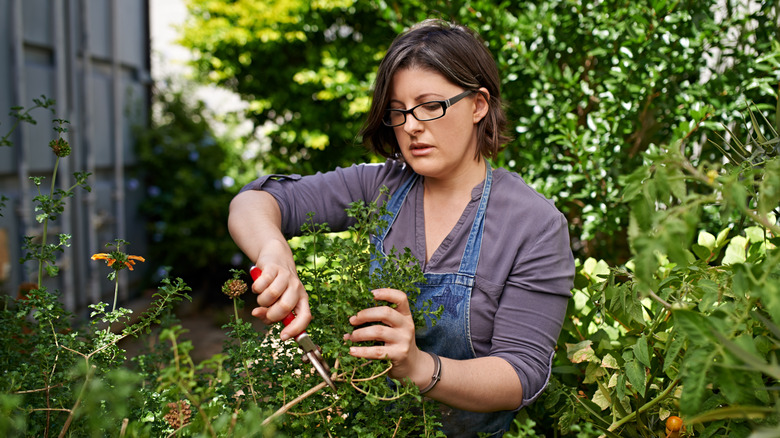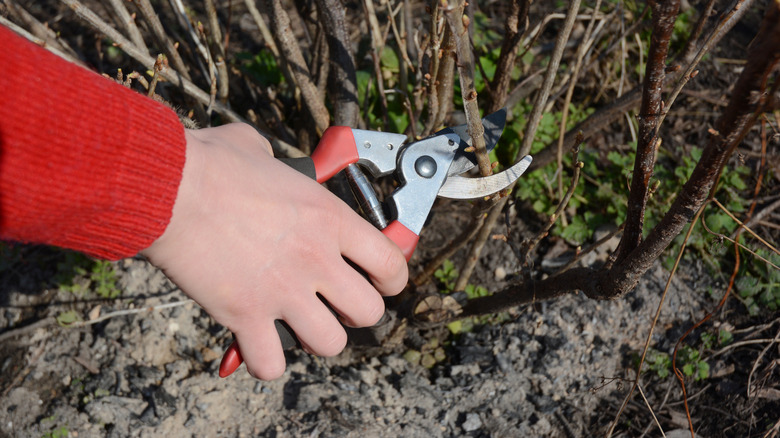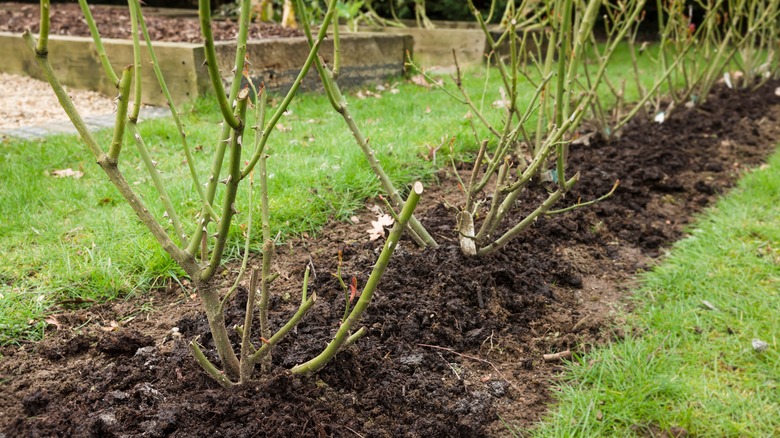What Rejuvenation Pruning Is, According To House Digest's Expert
We all find ourselves in need of some rejuvenation occasionally. Perhaps it's time for a mani-pedi, or we are overdue for a new hairstyle. Rejuvenation isn't just for us humans, though. Sometimes, our plants need some extra care. For the same reasons we get our hair and nails done, the right kind of pruning for your older plants can help them become more beautiful. Thankfully, like humans, our plants may need some rejuvenation but become even more stunning with a little loving attention.
Rejuvenation pruning can seem a bit harsh because you do need to remove quite a bit of a mature bush, but it will thank you next year by coming back bigger and better. Removing old growth from shrubs helps those plants put their energy into new growth with fuller, healthier foliage and blooms. You can remove up to one-third of the oldest branches or canes on your bushes, and that's a lot. But without that old, tired wood hanging around, your newer growth will flourish.
Rejuvenation pruning
There are a few different terms for pruning that are used interchangeably. Some call all major trimming rejuvenation pruning, others refer to it as renewal pruning, while others call it harsh pruning. These can all mean the same thing or something entirely different, depending on who you ask. So that's confusing. In this situation, we are defining the process of removing up to one-third of the plant rejuvenation pruning and cutting a plant to about 1 foot above the ground renewal pruning.
Unless your plant is badly damaged, you can practice gradual rejuvenation pruning. This creates the least amount of stress for the plant and keeps it from looking scraggly while it produces new growth. Gradual rejuvenation pruning for most bushes means cutting up to one-third of the oldest canes to the ground every year. Although many bushes will tolerate — and even thrive — with harsher pruning, it will be a while before they are more than an eyesore in your landscape. For plants that do not have a cane growth habit, you can shape your plant by removing the oldest branches.
Renewal pruning
If you are dealing with a massively overgrown plant that is struggling to produce healthy foliage and blooms, it may benefit from renewal pruning. Only some types of bushes respond well to being cut to about 1 foot tall. Anything that dies back to the ground but returns from the roots can be cut back without risking harm to the plant. In some regions, butterfly bushes, crepe myrtles, and figs return vigorously from the roots in the spring.
In other situations, some bushes are hard to kill even when they have grown out of control. Forsythia grows quickly and is a bit wild, so if you want to keep it but need it to fit within a specific space, you can cut this bush entirely down to 1 foot tall. It will come back with a vengeance next year. Spirea, honeysuckle, and nandinas may all benefit from renewal pruning. As they grow back, yearly renewal pruning will keep them in shape and looking beautiful.
When you should prune
The time of year you should prune depends on the plant. The rule for most bushes is to prune right after they have bloomed. For lilacs, beauty bushes, and azaleas, this is usually late spring. Spring blooming bushes, like hydrangeas, should have the canes that bloomed this year removed to make room for new growth. Keep in mind that there are hydrangeas that produce flowers on old wood (last year's growth) and others that bloom on this year's growth. It's important to know what you have so you do not accidentally remove canes that are producing buds for next year.
Some bushes that bloom from summer through fall can be pruned in late winter, just before they break dormancy. Crape myrtles and knock-out roses fall into this category. Know what plants you have and when they should be pruned before grabbing your loppers to get the best foliage and blooms next season.



